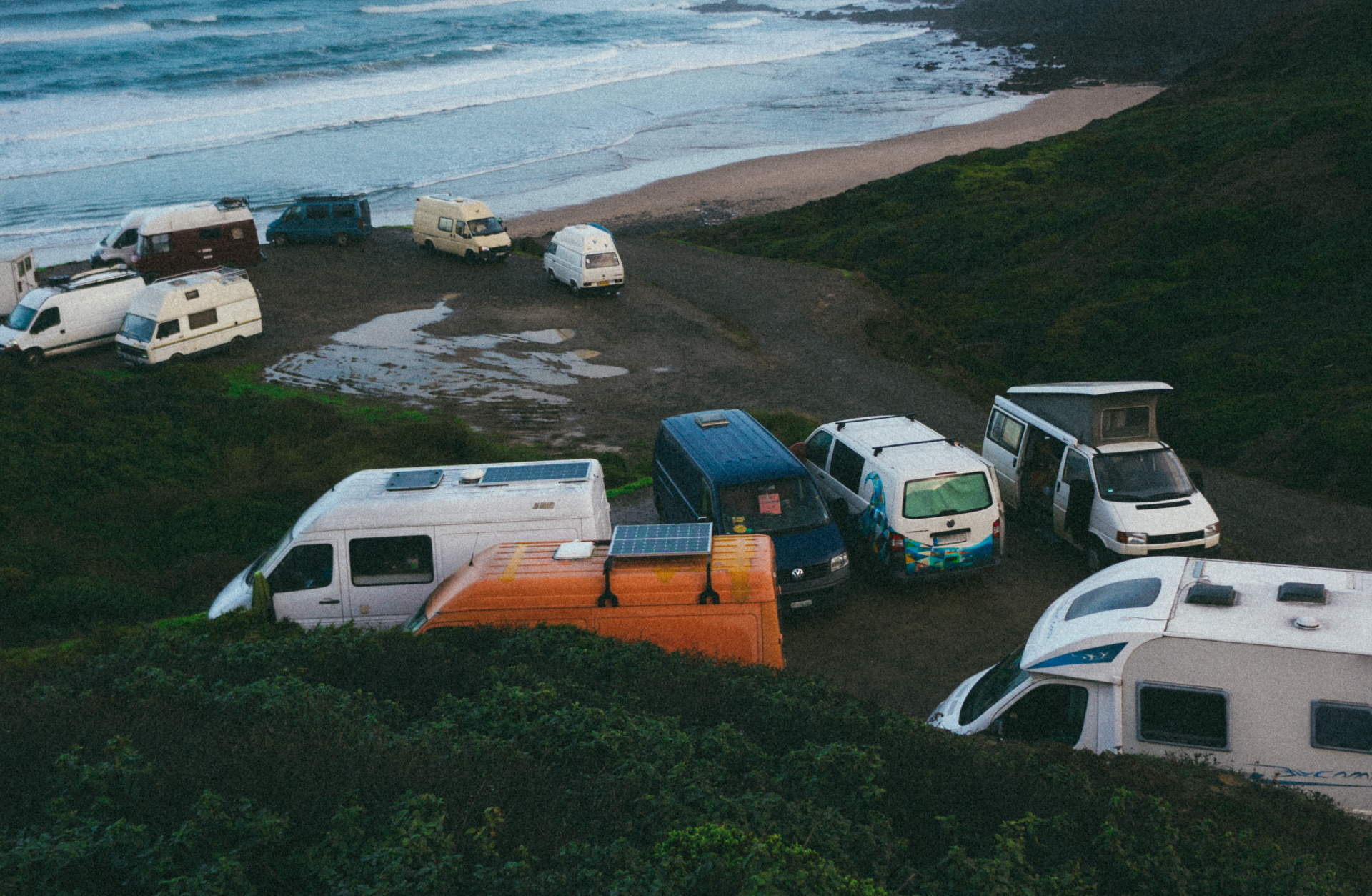Half-integrated motorhome
A half-integrated motorhome, also known as a semi-integrated motorhome, is a type of recreational vehicle (RV) that combines the best features of a Class B motorhome and a Class C motorhome. They are built on a van chassis and offer a comfortable and spacious living area that is more streamlined and fuel-efficient than a Class C motorhome. In a half-integrated motorhome, the cab area of the van remains intact, while the rear portion of the vehicle is converted into a living area. The driver and passenger seats are still part of the original van design, but they are separated from the living area by a partition. This means that the driving experience is similar to that of driving a van or SUV, rather than a large RV. Half-integrated motorhomes typically range from 20 to 28 feet in length and can accommodate up to four or five people. They feature a fully-equipped living area with a kitchen, bathroom, and sleeping area. Some models also come equipped with slide-outs, which are sections of the RV that can expand outward, creating additional living space when the vehicle is parked. One of the advantages of half-integrated motorhomes is their versatility and ease of use. They are more compact and maneuverable than Class A motorhomes, which can be a benefit when driving in urban or mountainous areas. They are also more spacious and comfortable than Class B motorhomes, making them a good choice for families or groups of friends who want to travel together. Half-integrated motorhomes are popular among people who enjoy road trips, camping, and outdoor adventures. They offer a comfortable and convenient way to travel, while still allowing the freedom and flexibility to explore new destinations. They are also a good choice for people who want to live in an RV full-time, as they offer a balance of space, comfort, and affordability.
Fully integrated motorhome
A fully integrated motorhome, also known as an A-class motorhome, is the largest and most luxurious type of recreational vehicle (RV) available. They are built on a specially designed chassis, with the entire vehicle being one unified structure. This means that the driver’s cab and the living area are seamlessly integrated into a single unit. In a fully integrated motorhome, the driver’s cab is part of the living area, which means that there is no partition or separation between them. This provides a panoramic view of the road and surroundings, making it easier to drive and navigate the vehicle. Additionally, the lack of a separate cab area means that the living space is maximized, providing a more spacious and comfortable interior. Fully integrated motorhomes are typically between 25 to 45 feet in length and can accommodate up to eight people. They feature a fully-equipped living area with a kitchen, bathroom, and bedroom, as well as high-end appliances, electronics, and entertainment systems. Some models also come equipped with slide-outs, which are sections of the RV that can expand outward, creating additional living space when the vehicle is parked. One of the main advantages of a fully integrated motorhome is its luxury and comfort. They are often equipped with top-of-the-line amenities, including leather furniture, marble countertops, and high-end appliances. They are also highly customizable, with many manufacturers offering a range of floor plans and options to suit different lifestyles and preferences. Fully integrated motorhomes are a popular choice among full-time RVers, as they provide a high level of comfort and convenience for extended periods of travel. They are also a good choice for people who want to travel with large groups or families, as they offer ample space and sleeping accommodations. However, fully integrated motorhomes can also be expensive, with prices ranging from $100,000 to over $1 million. They also require a special license to drive in some states and can be more difficult to maneuver in tight spaces or on narrow roads.
Alcove motorhome
An alcove motorhome, also known as a cabover motorhome, is a type of recreational vehicle (RV) that is built on a van or truck chassis. They are similar to a Class C motorhome, but have an extended section over the driver’s cab that provides additional living space. In an alcove motorhome, the over-cab section typically includes a large bed, which is accessed via a ladder or stairs. This provides additional sleeping space and is often used as a primary sleeping area for children or guests. The main living area is located in the rear of the vehicle and includes a kitchen, bathroom, and seating area. Alcove motorhomes typically range in length from 20 to 30 feet and can accommodate up to six or seven people. They are often used by families or groups of friends who want to travel together and need a combination of sleeping and living space. They are also popular among budget-conscious travelers, as they are often more affordable than other types of RVs. One of the advantages of an alcove motorhome is its space efficiency. The over-cab section provides additional sleeping space without taking up valuable living space in the main cabin. Additionally, the cabover design provides better aerodynamics and can improve fuel efficiency. However, alcove motorhomes can also be more difficult to drive than other types of RVs, as the extended section over the cab can create blind spots and make the vehicle more top-heavy. They can also be more difficult to park and maneuver in tight spaces. Overall, alcove motorhomes are a good choice for families or groups of friends who want a comfortable and affordable way to travel and explore new destinations. They offer a good balance of space, convenience, and affordability, making them a popular choice among RV enthusiasts.
